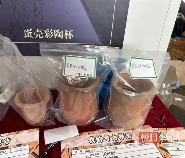Golden Discoveries in Shantou: Unearthing the Past with Remote Sensing Technology

In an unprecedented archaeological expedition led by Sun Yat-sen University (SYSU), researchers have unearthed a cache of ancient gold coins in the city of Shantou, Guangdong Province, China. This significant discovery is not only a testament to the region's rich historical past but also underscores the power of modern technology in uncovering hidden treasures beneath the earth’s surface. Utilizing advanced remote sensing techniques and precision tools, the team has managed to pinpoint and excavate a site believed to be of immense importance to understanding early economic and trade networks in this part of China.
The use of ground-penetrating radar (GPR) and satellite imagery has played a crucial role in identifying potential locations for excavation. By combining multiple datasets, the team was able to map the subterranean terrain with unprecedented accuracy. This approach has minimized invasive digging and helped preserve the integrity of the site while maximizing the recovery of artifacts. Among the findings are intricate gold coins, each bearing unique markings and inscriptions, indicating a wide-ranging network of trade that spanned the ancient world.
The project has been spearheaded by Dr. Liang Xuemei, a prominent archaeologist at SYSU, whose research has contributed significantly to the field. "The use of advanced remote sensing technologies has transformed the way we approach archaeological investigations," said Dr. Xuemei. "With these methods, we can gather data non-invasively and prioritize excavation efforts with surgical precision."
Local authorities in Shantou have been supportive of the project, recognizing its potential for promoting cultural heritage tourism and academic collaboration. This collaboration between academic institutions and local governance highlights the importance of community involvement in preserving and exploring our shared history.
 LongStory.Asia The Digital Archaeological Portal
LongStory.Asia The Digital Archaeological Portal